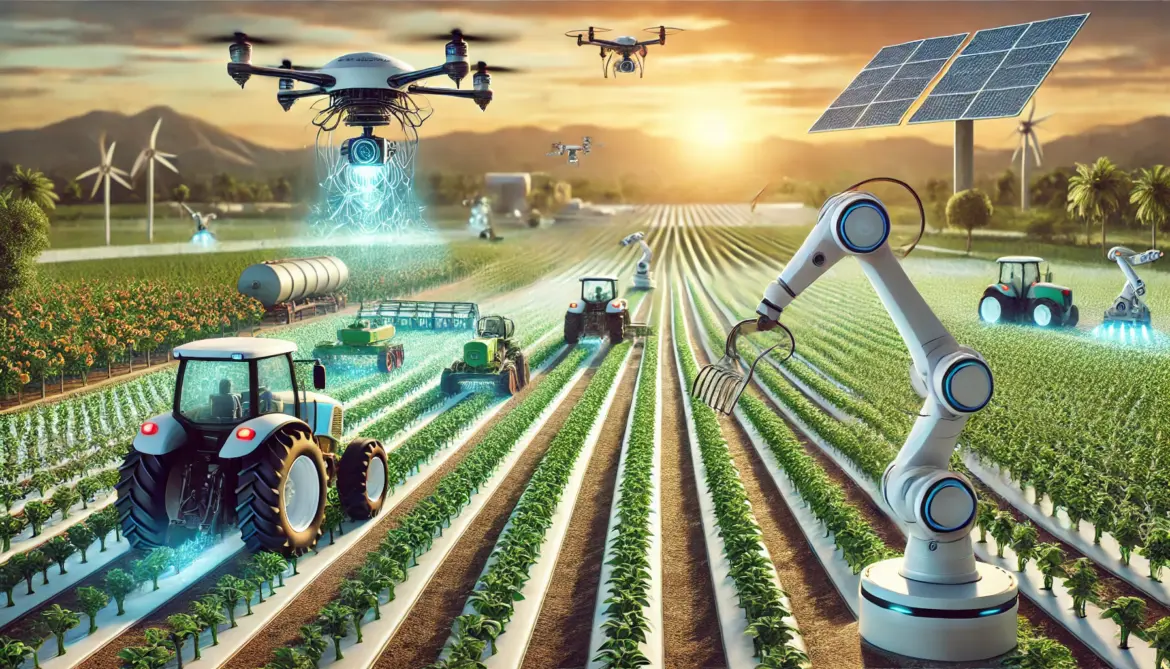Precision Farming: Robots Help Make Smarter Choices
In today’s agriculture, precision matters. Smart farming employs machines and detectors to collect information about crop wellbeing, dirt dampness, and climate patterns. This data allows farmers to give plants what they require cutting down on waste and boosting harvests. Take robotic watering systems as an example: they make sure plants get just enough water. automatic fertilizer spreaders help maximize plant growth without using too many chemicals.
Key Takeaway:
Machines help farmers make choices based on data resulting in better crops with less input.
Self-Driving Machines: The Future of Farm Work
Self-driving tractors and harvesters stand out as one of the coolest breakthroughs in farming. These machines work on their own to plant seeds, water crops, and even gather produce. Farmers set them up to do jobs well, which cuts down on worker costs and gives them time to focus on other farm work. Because they can run non-stop, these self-driving farm tools boost output and make sure crops get care when they need it.
Key Takeaway:
Self-driving tractors and harvesters help farmers save time and money while getting more done.
Drones: Farmers’ Eyes in the Sky
Drones are now a key part of modern farming. These flying machines fitted with cameras and sensors, let farmers see their fields from above. They spot issues like pests dry areas, or sick plants before they turn into big problems. By finding trouble spots , farmers can act fast to save their crops and get the best harvest.
Key Takeaway:
Drones offer farmers a high-tech way to watch their crops helping them catch issues and act .
Robotic Harvesters: Picking Fruits and Vegetables with Care
Picking delicate crops like fruits and vegetables needs precision and care. Robotic harvesters address this need. These smart machines use cameras and sensors to spot ripe produce and pick it without damage. This tech helps in places where farm workers are scarce making sure crops get picked at the right time with no waste.
Key Takeaway:
Robotic harvesters make it easier and more productive to pick delicate crops helping farmers meet demand without depending only on human workers.
Robotics for Sustainable Farming
Robotics does more than boost productivity—it also makes farming greener. Robots can apply water, fertilizers, and pesticides where needed cutting down on waste and helping the environment. Smart machines prevent overuse of chemicals, which keeps soil healthy and stops pollution from reaching nearby water. Plus many farm robots run on less power making the whole industry more friendly.
Key Takeaway:
Robots make farms kinder to nature by cutting waste, saving resources, and reducing pollution.
Challenges of Adopting Robotics in Farming
Robots bring many advantages, but they also pose challenges. A big obstacle is their price—cutting-edge robotic systems can be pricey making it hard for small farms to buy them. Also, using robots needs tech skills, so farmers might need lessons to run and fix these machines. But as tech gets better and more common, prices should fall giving all farmers a chance to use robots.
Key Takeaway:
Robots can cost a lot and need training, but as tech grows, they’ll get cheaper and simpler to use.
The Future of Robotics in Farming
As we look to the future, robots will play a bigger part in farming. We might soon see farms that run themselves where machines do all the work from planting seeds to picking crops. As technology gets better, farmers will grow more food with less work, spend less money, and harm the environment less. Tomorrow’s farms will use robots and machines to help feed more people around the world.
Key Takeaway:
Robots will shape farming’s future making it more productive, cost-effective, and eco-friendly.
